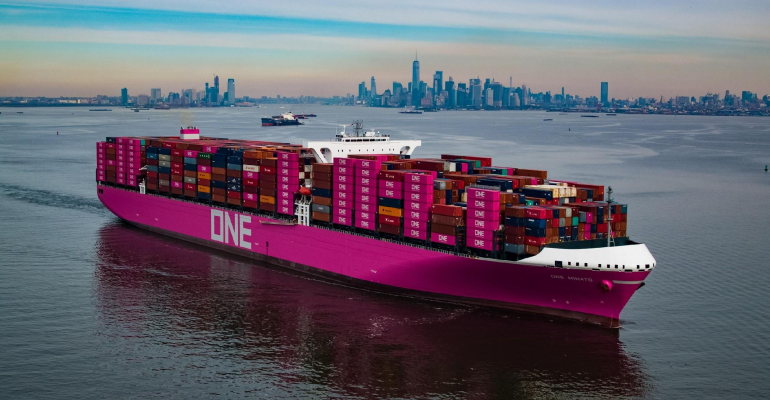An investment of $25bn will increase ONE’s standing capacity by more than 66% by 2030, which equates to about 200,000 teu in capacity a year up to the end of the decade.
ONE currently has 41 ships on order, with a combined capacity of 520,000 teu, but Alphaliner reports: “Even assuming this sum is fleet growth not replacement, this leaves considerable headroom yet to reach 3m teu.”
Former research analyst Mark McVicar said: “The move is an attempt to gain market share, but in order for the market to remain buoyant it relies on the assumption that others will cede market share.”
McVicar said the strategy looks like “more of the same but bigger,” without changing the operational structure of the company, more door-to-door operations, and some control over the supply chain with investments in terminals.
Fleet growth for the Singapore-based line will increase over the six-year period from around 4%, which is below the level of market growth, to 10% annually, higher than the projected market growth to the end of the decade. Accountants PWC projects annual global GDP growth of around 3-3.5%.
“ONE should realise an annual fleet growth of around 10% until 2030 to reach its goals. That’s indeed a very ambitious plan in a market where moderate growth and overcapacity is expected,” noted Stefan Verberckmoes, senior analyst at Alphaliner.
This would mean that the ONE expects other carriers to “cede market share” over the coming six-year period, two years of which ONE has already conceded will be challenging given the supply and demand imbalance that already exists, and with the delivery of a ship a day expected until the end of 2024 and more capacity expected to be delivered into 2025 and 2026.
As a result, the company is looking to deliver improved services to its customers, but this is not a simulation of the Gemini Cooperation, that will be launched by ONE’s former THE Alliance partner Hapag and its new associates Maersk. ONE will not operate a hub and spoke system and remains committed to THE Alliance to which it belongs.
ONE is committed to terminal investments as part of its ONE 2030 strategy, but these have so far been mainly in facilities that are already owned by ONE’s three major shareholders, the Japanese carriers K Line, MOL and NYK Line.
The strategy also has a financial dimension and the company aims to average a 10% return on equity (ROE) which McVicar said is a reasonable average over the period.
“ONE is essentially embracing its core offering and adding terminals and inland provision to that, with some diversification and growth in market share,” concluded McVicar.
Copyright © 2024. All rights reserved. Seatrade, a trading name of Informa Markets (UK) Limited.
Add Seatrade Maritime News to your Google News feed.  |
